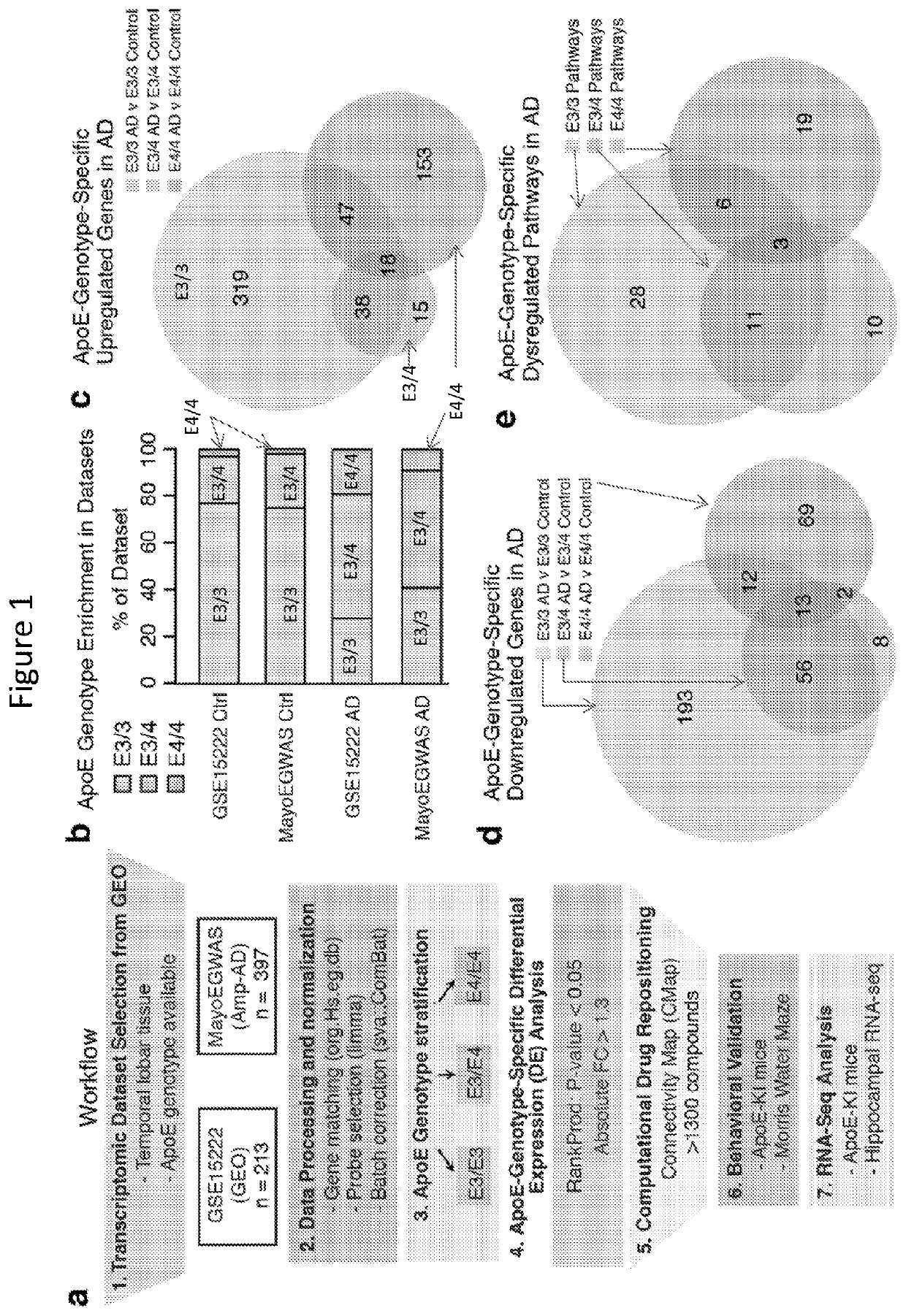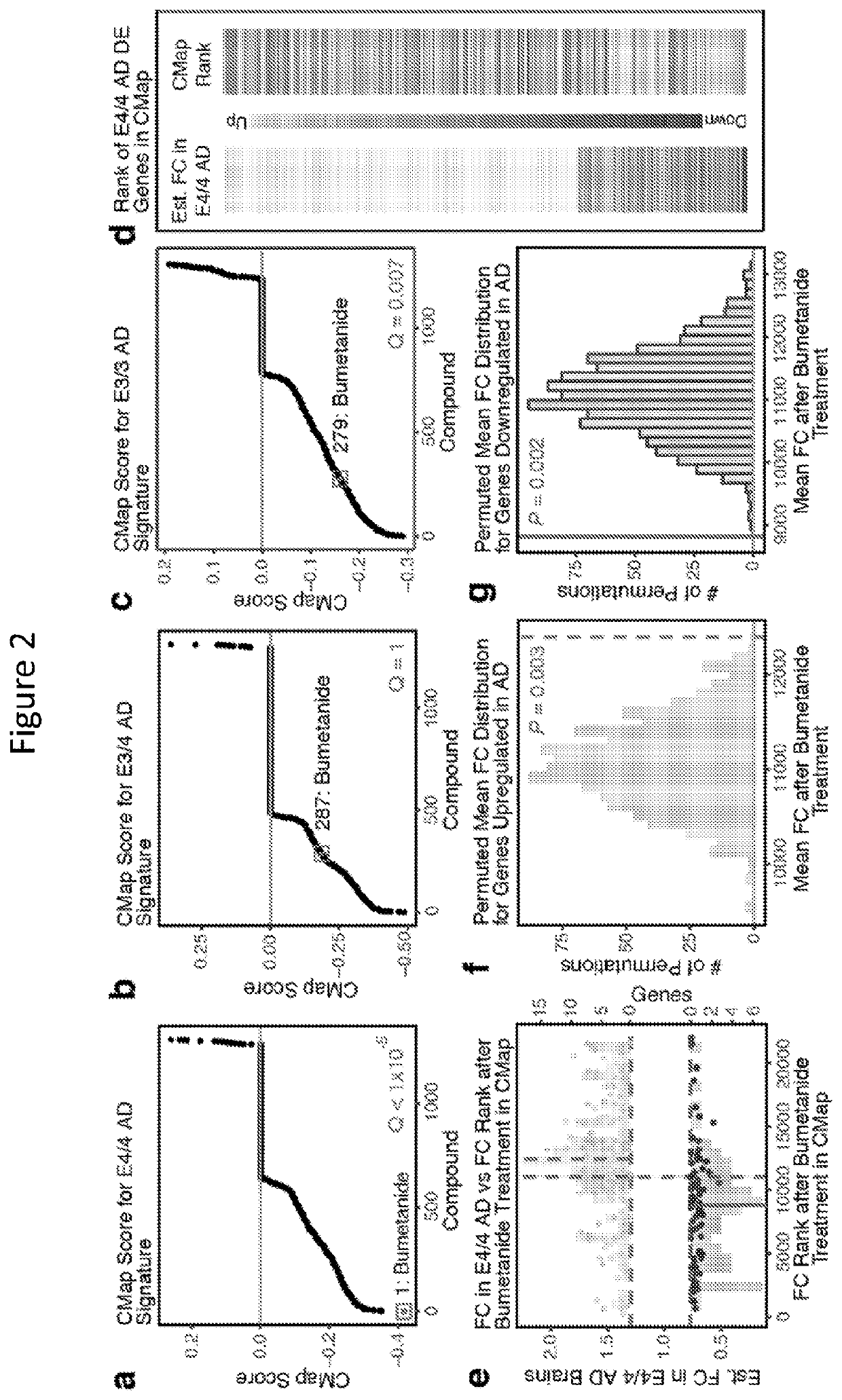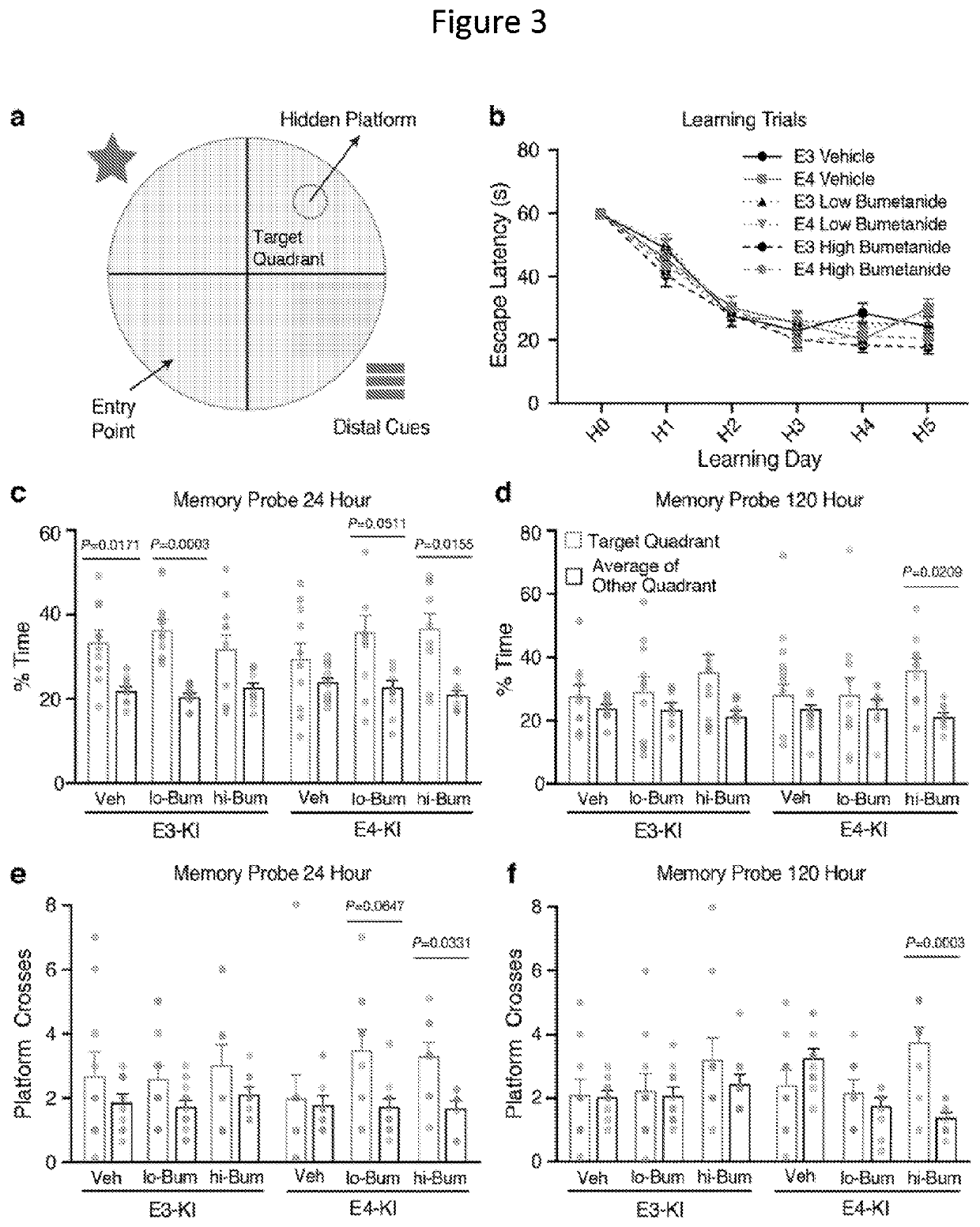Methods for treating apoe4/4-associated disorders
a technology of apoe4/4 and associated disorders, applied in the field of progressive neurodegenerative diseases, can solve the problems of neurodegeneration and dementia, increased risk of cerebral amyloid angiopathy, and age-related cognitive declin
- Summary
- Abstract
- Description
- Claims
- Application Information
AI Technical Summary
Benefits of technology
Problems solved by technology
Method used
Image
Examples
example 1
In Silico Screen and Identification of Bumetanide
[0216]The study protocol is described and results are presented here.
[0217]Described herein is an apoE-genotype-specific drug repositioning approach to screen for drugs to treat AD and / or apoE4 / 4-genotype-related diseases and disorders.
[0218]From a gene expression meta-analysis of 610 human temporal lobar samples obtained from public databases, apoE genotype-specific transcriptomic signatures of AD were established and used to query a validated Connectivity Map (CMap) database containing transcriptomic perturbation signatures of 1300 existing drugs to identify those capable of perturbing an entire gene-expression network away from the apoE-genotype-driven disease state towards a normal state.
[0219]ApoE-genotype-specific transcriptomic signatures of AD from publically available databases were first analyzed, and the first CMap database search using apoE-genotype-specific signatures of AD were completed.
[0220]To establish apoE-genotype-...
example 2
In Vivo Animal Model Testing for Effect of Bumetanide on Memory
[0228]The study protocol is described and results are presented here.
[0229]As shown below, the effects of bumetanide were tested in ApoE3 / 3 and ApoE4 / 4 knock-in (KI) mice in vivo. Overall, it was observed that cognitive function is improved in mice with the apoE 4 / 4 genotype treated with bumetanide.
[0230]The effects of bumetanide on spatial learning and memory performance of aged apoE4-KI and apoE3-KI mice were determined. The Morris water maze (MWM) was used to test spatial learning and memory over 5 days in hidden platform learning trials followed by probe trials of short-term memory at 24 hours after the last hidden trial and long-term memory at 72 and 120 hours. Learning curve and swim speed did not differ across genotype or treatment groups during the hidden trials. However, vehicle-treated apoE4-KI mice had impairment of short-term spatial memory not seen in vehicle-treated apoE3-KI mice. Strikingly, bumetanide res...
example 3
In Vivo Testing of Effect of Bumetanide on Transcriptome
[0235]To explore bumetanide's effects on the transcriptome in vivo, an RNA-sequence analysis of the hippocampus (a temporal lobe region considered the epicenter of AD pathologies) from apoE4-KI mice treated with vehicle or bumetanide (0.2 mg / kg daily intraperitoneal injection) for 8 weeks was performed. Hierarchical clustering and principal component analyses showed significant clustering of samples based on DE genes from bumetanide versus vehicle treatment, suggesting a distinct drug effect in the hippocampus. Furthermore, in bumetanide-treated apoE4-KI mice, the genes significantly upregulated in apoE4 / 4 AD were shifted down in their expression ranks (toward higher numbered ranks) (P<0.001 by Monte Carlo simulation), corroborating the CMap data and the hypothesis that reversal of the disease-specific transcriptomic signature is a rational strategy for computational drug repurposing, even in animal models. Pathway analysis of ...
PUM
| Property | Measurement | Unit |
|---|---|---|
| Frequency | aaaaa | aaaaa |
| Frequency | aaaaa | aaaaa |
Abstract
Description
Claims
Application Information
 Login to View More
Login to View More - R&D
- Intellectual Property
- Life Sciences
- Materials
- Tech Scout
- Unparalleled Data Quality
- Higher Quality Content
- 60% Fewer Hallucinations
Browse by: Latest US Patents, China's latest patents, Technical Efficacy Thesaurus, Application Domain, Technology Topic, Popular Technical Reports.
© 2025 PatSnap. All rights reserved.Legal|Privacy policy|Modern Slavery Act Transparency Statement|Sitemap|About US| Contact US: help@patsnap.com



